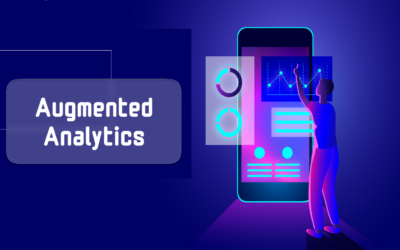Top UI UX trends to look out for in 2023

The potential and development of technology are always on display. In the fast-paced world of technology, user interface (UI) and user experience (UX) design are constantly evolving. There are great concepts and technology to revolutionize and enhance UI UX design in 2023 with thrilling new year promises.
Importance of the latest UI UX Design
To guarantee that the industry standards are fulfilled, it is crucial to keep in mind that the UI and UX of a digital product, such as an app or website, greatly influence the user’s first impression of the brand or business. The latest UI/UX trends aim to enhance the overall user experience, making it more intuitive and enjoyable. It can keep users engaged for longer and drive conversions by focusing on accessibility, making digital products more usable for all people, including those with disabilities. A unique and well-designed UI/UX can help a brand stand out in a crowded market and differentiate itself from competitors. The latest trends are geared towards future technologies, such as virtual and augmented reality, to provide seamless experiences.
Top UI UX Trends of 2023
Here are some of the latest trends in UI UX design;
Motion Design: The art of producing animated visuals and special effects is known as motion design. It is a crucial component of contemporary visual communication and is getting more and more vital in the age of digital technology. Motion design is an effective strategy for drawing in spectators and maintaining their interest. For the purpose of promoting goods, services, and concepts, animated graphics and visual effects are preferable to static visuals since they are more memorable and attention-grabbing. It enables designers to create visually appealing narratives. Designers may build dynamic and compelling storylines that engage audiences by fusing animation, sound, and text. Motion design is helpful for deciphering and making complex information more understandable. Designers can make it simpler for viewers to understand complex ideas and information by animating statistics, charts, and graphs. Motion design may stimulate viewers’ emotions, which makes it perfect for crafting potent commercials, advertising videos, and social media content.
Multicolor Soft Gradients: A common design method used in UI/UX design is the multi-color soft gradient as it can successfully add depth and dimension to a design, making it more visually appealing and lively. Additionally, gradients achieve a seamless transition between hues, giving the design a more unified appearance. Gradient color is a valuable tool for designers to express their ideas since they may highlight particular components or convey a particular mood or emotion. Soft gradients can make an experience more accessible for people who struggle with color vision, as the gradual change in color can help these people tell apart distinct objects. To distinguish a business from rivals and forge a strong visual identity, gradients can be employed to give it a unique look and feel.
Clean Design: Because it has many advantages for both consumers and businesses, clean design has grown popular in UI/UX design. Simplicity, minimalism, and functionality are given priority in clean design, which results in a streamlined and user-friendly experience. By removing clutter, it’s simpler for users to concentrate on the most crucial details and execute the appropriate action. Additionally, simple designs are simpler to update and maintain, which may be a big benefit for organizations. Additionally, simple designs are frequently more eye-catching and contemporary, which promotes a brand’s legitimacy and draws customers. The need for more effective, user-friendly, and aesthetically pleasing interfaces in the digital age is largely reflected in the movement toward clean design.
High Contrast/Monochrome: In order to make the interface easily readable and used by a variety of users, high contrast monochrome is a crucial component in UI/UX design. An effective contrast between text, backgrounds, and other elements is achieved by using a constrained color palette, usually black and white. This makes text easier to read, especially for those who may have trouble reading text in low-contrast settings due to visual impairments or color blindness. A clean, straightforward style that emphasizes the monochromatic color scheme might assist direct users’ attention to the interface’s functions and content.
Dark Mode: It is crucial for UI/UX design because it makes users’ eyes less tired and more comfortable when using digital devices, especially in dimly lit areas. On devices with OLED or AMOLED displays, the dark mode also aids in battery conservation. Additionally, it can give an application a more attractive and contemporary appearance, giving users a consistent experience and a visual identity. Care for accessibility is also shown by the inclusion of a dark mode, which can enhance contrast and make it simpler for people with visual impairments to use the app. Overall, implementing a well-designed dark mode can improve user satisfaction and increase the usability and enjoyment of a digital product for a wide spectrum of consumers.
These trends are shaping the future of UI/UX design and will continue to play a major role in how users interact with technology. Designers must keep up with these trends to provide the best possible user experience for their users.









